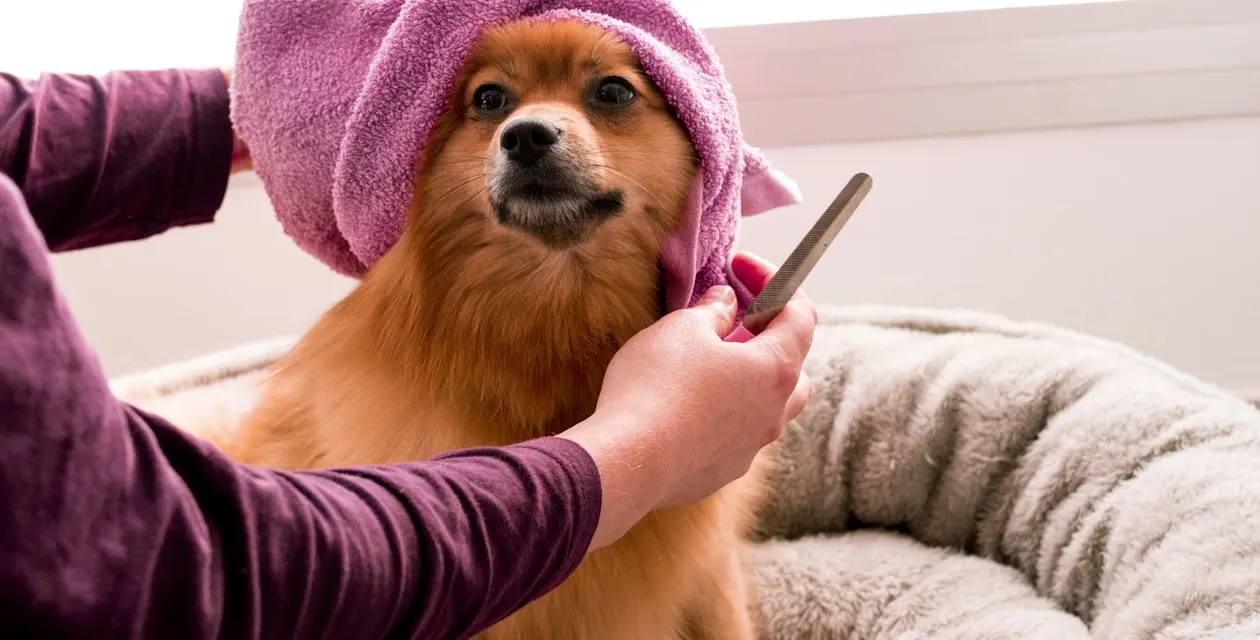This article will guide you through the top 5 common pet grooming mistakes many owners make and provide clear, actionable advice on how to avoid them. By understanding these pitfalls, you can ensure a safe, positive, and effective grooming routine for your pet.

Regular grooming is more than just keeping your furry friend looking good. it’s essential for their overall health, comfort, and happiness. Grooming at home can be a wonderful bonding experience, strengthening the connection you share with your pet. However, without the right knowledge and techniques, it’s easy to make mistakes that can cause discomfort, stress, or even injury.
Why Avoiding Pet Grooming Mistakes is Crucial?
Before diving into the specific errors, let’s briefly touch on why careful grooming matters so much. Mistakes during grooming can unfortunately lead to:
- Pet discomfort or stress: Making the experience unpleasant can create fear or anxiety around grooming.
- Accidental injuries: Nicks from clippers, cutting the nail quick, or skin irritation from harsh products can occur.
- Skin irritation or infections: Improper bathing or brushing can damage the skin barrier.
- Worsening of coat problems: Neglecting brushing can lead to severe matting that requires professional intervention.
Top 5 Pet Grooming Mistakes (and How to Fix Them)
Understanding these common errors is the first step towards becoming a more confident and effective home groomer.
Mistake 1: Using the Wrong Tools (or Human Products)
One of the most frequent errors is reaching for tools not specifically designed for pets. Human shampoos have a different pH balance than what pets require, and our brushes or scissors might not be safe or effective for their skin and coat.
- Problem: Using human shampoos, dull clippers, the wrong type of brush for the coat, or standard household scissors.
- Risks: This can lead to skin irritation, dryness, ineffective grooming (not removing loose hair or mats properly), and a higher risk of accidental cuts.
How to Avoid:
- Invest in pet-specific products: Always use shampoos and conditioners formulated for dogs or cats.
- Select appropriate tools: Choose brushes, combs (like slicker brushes, undercoat rakes, or bristle brushes), and nail clippers based on your pet’s specific coat type, size, and needs. Consider a nail grinder as an alternative for sensitive pets.
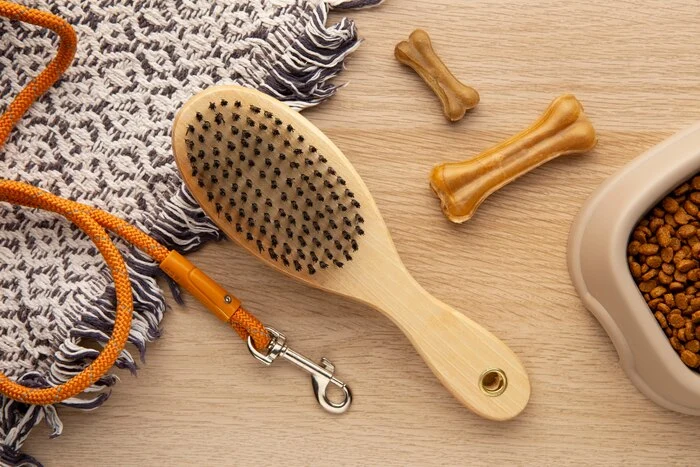
- Use safety-tipped scissors: If you need to trim small areas (like around the paws or face) and feel comfortable doing so, always use blunt, safety-tipped grooming scissors.
Mistake 2: Bathing Incorrectly (Too Much or Too Little)
Finding the right bathing balance is key. Both extremes can cause problems for your pet’s skin and coat health.
- Problem: Bathing your pet too often strips away natural, protective oils; while not bathing enough allows dirt, oils, and bacteria to accumulate. Using incorrect water temperature.
- Risks: Over-bathing can cause dry, itchy, flaky skin. Under-bathing can lead to matting, skin infections, and unpleasant odors. Incorrect water temperature causes discomfort and stress.
How to Avoid:
- Know your pet’s needs: Research the recommended bathing frequency for your pet’s breed and coat type (generally every 1-3 months unless advised otherwise by a vet).
- Use lukewarm water: Always test the water temperature; it should feel comfortably warm, not hot or cold.
- Rinse thoroughly: Ensure all shampoo and conditioner residue is completely rinsed out to prevent skin irritation.
- Spot clean: Use pet-safe wipes or waterless shampoos for minor clean-ups between full baths.
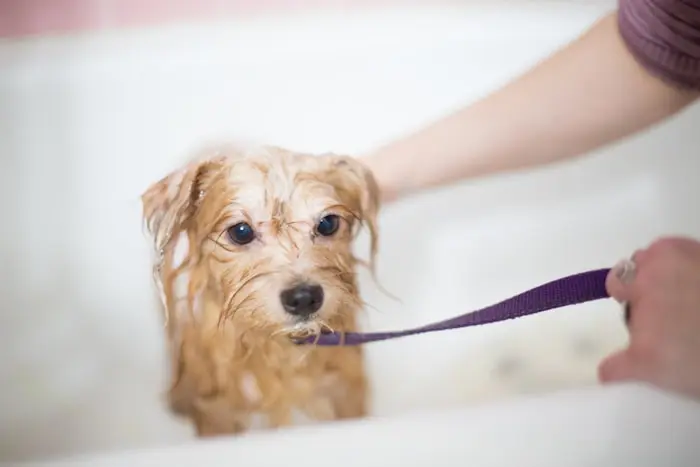
Mistake 3: Neglecting or Mishandling Nail Trims
Nail trimming can be intimidating for both pets and owners, often leading to neglect or improper technique.
- Problem: Letting nails get too long, or accidentally cutting into the “quick” – the sensitive blood vessel and nerve inside the nail.
- Risks: Overly long nails are uncomfortable, affect posture and gait, can get snagged and torn, or even grow into the paw pad. Cutting the quick is painful and causes bleeding, creating a negative association with nail trims.
How to Avoid:
- Trim regularly: Aim to trim nails roughly every 3-6 weeks. If you hear clicking on hard floors, it’s usually time for a trim.
- Identify the quick: In light-colored nails, the pinkish quick is usually visible. Trim only the white/clear tip before it. For dark nails, trim very small slivers at a time until you see a dark circle appear in the center (this indicates you’re near the quick).
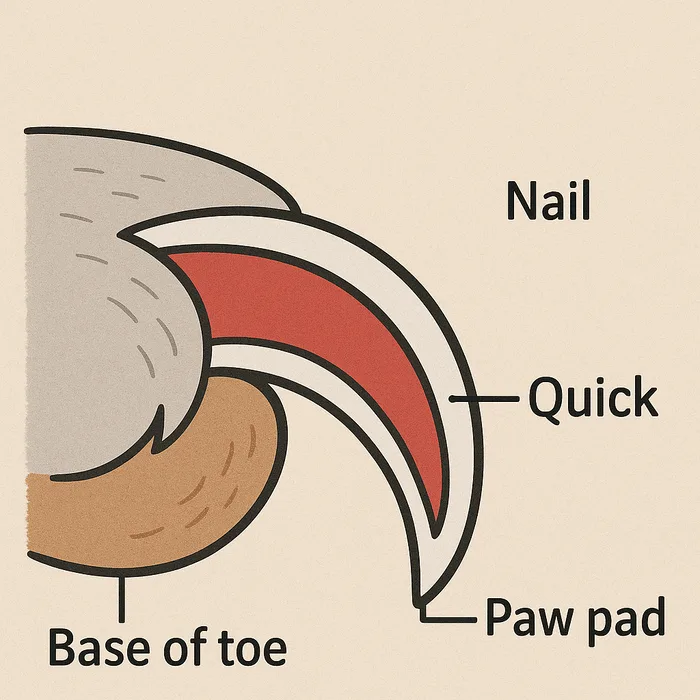
- Use sharp clippers or a grinder: Choose the tool you and your pet are most comfortable with.
- Have styptic powder ready: Keep styptic powder or cornstarch nearby to quickly stop bleeding if you accidentally nick the quick.
- Stay positive: Use treats and praise to make it a better experience.
Mistake 4: Improper or Infrequent Brushing
Brushing is fundamental for most pets, especially those with medium or long coats, but doing it incorrectly or not often enough causes issues.
- Problem: Not brushing often enough, using the wrong technique, or brushing too harshly.
- Risks: Painful mats and tangles, trapped dirt/debris, poor skin health, shedding issues, discomfort for the pet.
How to Avoid:
- Brush regularly: Long-haired pets often need daily brushing, while short-haired pets benefit from weekly sessions. Adjust based on your pet’s specific needs.
- Use the right brush: Match the brush type to the coat.
- Be gentle: Always brush in the direction of hair growth. Support the skin while brushing tangled areas.
- Tackle tangles carefully: Use your fingers or a detangling tool/mat breaker to gently work through knots. Never just pull on a mat. Consider using a pet-safe detangling spray.
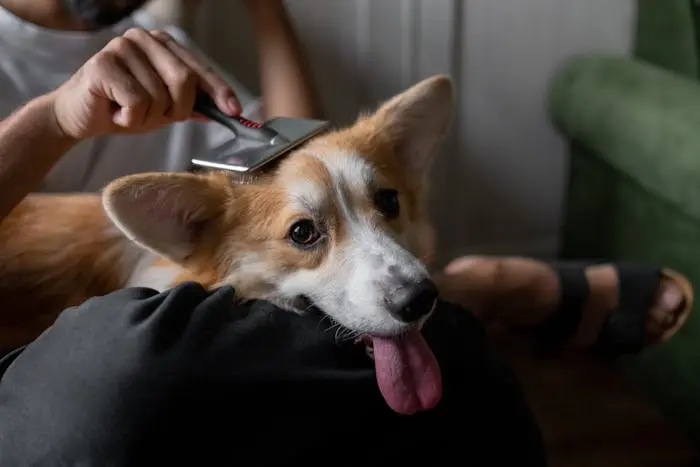
Mistake 5: Forgetting About Ears and Teeth
Grooming isn’t just about the coat! Ears and teeth are vital areas that require regular attention.
- Problem: Overlooking routine ear checks/cleaning and neglecting dental hygiene.
- Risks: Dirty ears can lead to painful infections, mite infestations, or yeast buildup. Poor dental care causes bad breath, gum disease, tooth loss, and can even contribute to serious systemic health problems affecting the heart, liver, and kidneys.
How to Avoid:
- Check ears weekly: Look inside the ears for redness, swelling, discharge, or an unusual odor.
- Clean ears as needed: Use a vet-approved ear cleaning solution and cotton balls to gently wipe the outer ear flap and accessible parts of the canal. Never insert cotton swabs deep into the ear canal.
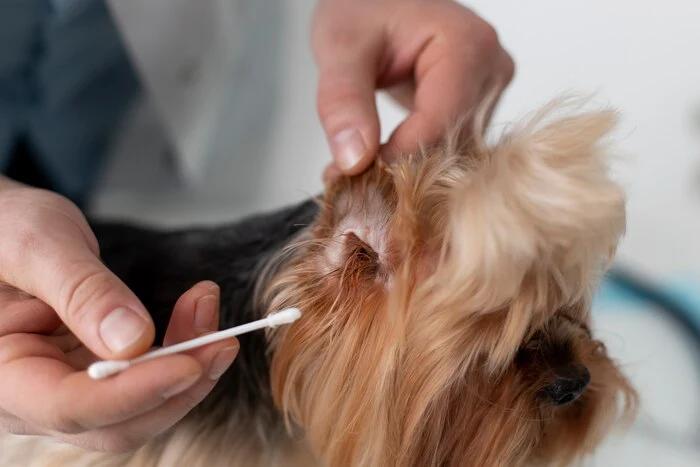
- Implement dental care: Brush your pet’s teeth daily or several times a week using pet-specific toothpaste and a soft brush. Supplement with dental chews, toys, or water additives approved by your vet or the VOHC (Veterinary Oral Health Council).
- Schedule vet check-ups: Regular veterinary visits should include professional ear and dental examinations.
Creating a Positive Grooming Experience
Beyond avoiding mistakes, focus on making grooming a calm and positive time for your pet:
- Start young: Introduce grooming concepts gently to puppies and kittens.
- Keep it short & sweet: Especially initially, keep sessions brief and end on a positive note.
- Use rewards: Offer plenty of praise and high-value treats.
- Choose the right time & place: Groom when your pet is relaxed, in a quiet area free from distractions.
- Recognize limits: Pay attention to your pet’s stress signals and know when to stop or take a break.
When to Seek Professional Help
While home grooming is beneficial, some tasks are best left to professionals, especially if your pet has severe matting, behavioral issues around grooming, or requires specialized cuts. Don’t hesitate to seek help if you’re uncomfortable with a specific task like nail trimming or anal gland expression.
If you decide professional grooming is the best route for certain needs or for regular maintenance, check out our curated list of pet groomers near you for trusted options.
Conclusion
At-home pet grooming is an essential part of responsible pet ownership. By understanding and avoiding these five common mistakes, you can make the process safer, more effective, and even enjoyable for your furry companion.
Remember that careful, patient grooming not only keeps your pet healthy and comfortable but also serves as valuable bonding time. Groom with confidence, pay attention to your pet’s cues, and always prioritize their safety and well-being.
The hardest part of dog grooming varies, but common challenges include safe nail trimming (especially with fearful dogs or dark nails), carefully removing matted fur without causing pain, handling sensitive areas like paws and ears, and managing a dog’s anxiety or lack of cooperation.
FFF in dog grooming stands for “Face, Feet, and Fanny“. It’s a maintenance trim focusing on tidying the hair around the eyes/muzzle, paws/pads, and the rear sanitary area for hygiene and neatness between full grooms.
Generally, use clippers with the direction of hair growth for a more natural look. Clipping against the growth cuts hair much shorter and gives a smoother finish, sometimes used carefully on specific coat types.
To deshed a dog, use appropriate tools like undercoat rakes or de-shedding brushes regularly. Brush effectively, potentially against then with the hair growth, and consider using de-shedding shampoos during baths to help loosen dead undercoat.
Healthy cats spend 30-50% of their day self-grooming by licking their fur and using paws to clean their face. This removes dirt and loose hair, distributes oils, aids temperature regulation, and can be self-soothing.
Most cats benefit from a bath every 4-6 weeks, though frequency varies. Long-haired cats may need baths more often (around 4 weeks), while hairless breeds often require weekly baths. Factors like lifestyle, age, and health also influence how often bathing is needed.
